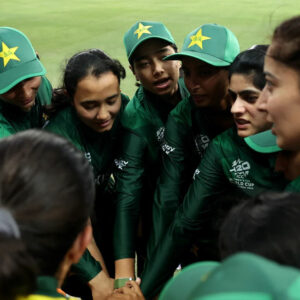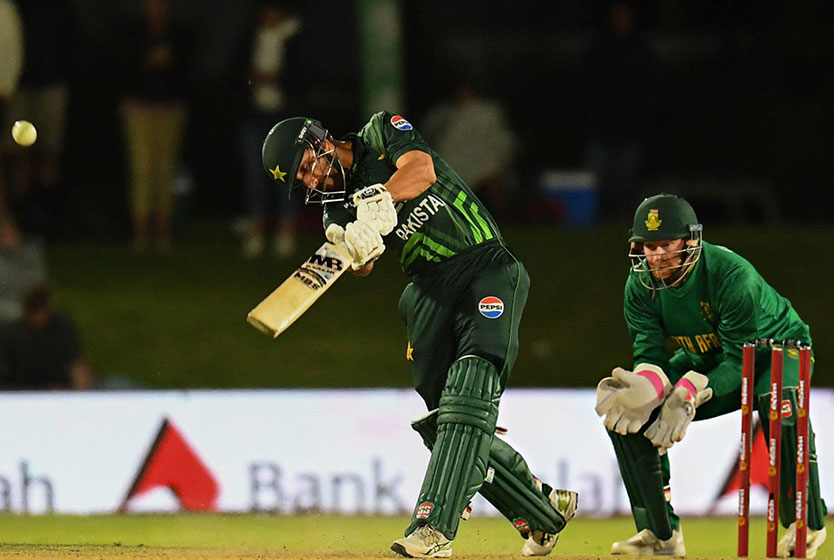
The Tragedy of the Close Game
October 2022. Pakistan plays Sri Lanka in the Women’s Asia Cup semi-final. With one ball to go, Nida on strike, Pakistan are 120-5, chasing 123. 3 to win, 2 to level the score. Nida hoicks the ball to mid-on, where she is dropped, and she and Aliya race back for two. But they’re not quick enough, and a fielder uproots the stumps, and Pakistan miss out on the final by one run to an opposition they defeated two days prior in a tournament in which they beat India.
October 2023. Pakistan plays South Africa in the men’s Cricket World Cup, defending a shaky score of 270. At 250, with just 21 runs to defend, two quick wickets inject life into a game considered as good as done. Haris Rauf takes one of the catches of the tournament off his own bowling for the ninth wicket. Two balls later, with ten to defend, he nearly blows Tabraiz Shamsi’s pad off. Huge appeal for lbw, reviewed, wickets umpire’s call. South Africa win by one wicket.
These are certainly not the only instances in the list of excruciatingly close losses that make me physically wince – there must be several hundred others: the one against West Indies in the 2023 Women’s T20 World Cup, which we lost by 3 runs. The virtual knockout against Sri Lanka in the men’s Asia Cup earlier this year, which we lost in the last over. I could, unfortunately, go on. But there are close games that end on the other side as well – such as the one Naseem Shah won us (against Afghanistan in 2022) and… the one Naseem Shah won us (against Afghanistan in 2023). Either way, I think the close game is inherently a tragedy – the losses because they’re losses, and the wins because they make you just hopeful enough to break your heart before one of those aforementioned losses.
Because pain is intrinsic to the human condition: that much we have established – albeit begrudgingly. There is very little way to prevent it – all escape routes and shortcuts eventually collapse. And Pakistan cricket, like most things Pakistani and all things cricket, is painful. But it is one thing to endure pain you saw coming – the landslide losses, the innings defeats, the bowled-out-for-70-while-batting-first-s. It is a pain that could have been so narrowly avoided – the last-ball run-outs and the haphazard last-over misfields – that sting the most, that make you shudder to think of them months and years down the line.
And on Friday, we added another to that list.
When Pakistan comes out to bat against New Zealand in the second ODI in Christchurch, the top order crumbles. “Crumbles” may not be the best word here because crumble implies that there was some structure prior to it. Muneeba goes for a duck, and Bismah and Aliya follow her to the dugout, faltering at single-digit scores, bringing Fatima Sana onto the crease at 35-4 in her first game as captain of the side. Now, at this point, if you’ve been following Pakistan cricket for long enough, you give up. You keep watching, of course, but the best thing for both you and the game is to pretend the game is over. But Fatima was just getting started. She bats through the innings, stitching strong partnerships with Najiha and Natalia, and keeps standing as wickets fall around her. Fatima Sana ends at a score of 90*, the highest ODI score by a Pakistani captain.
But before anything else – batter and captain and savior – Fatima is a bowler, and does she bowl. She strikes early, and within her first two overs, New Zealand are 13-2, and there is hope. However, as Bates and Green rebuild on the third wicket, reaching their half-centuries respectively, the fire sputters out. New Zealand begin cruising towards the series win – until a few strokes of magic from Ghulam Fatima and Sadia take them from 155-2 to 184-7. Umm-e-Hani takes a stunning catch off her own bowling for the 8th, and with 13 left to defend, Nashra takes the 9th. Sound familiar?
The thing about getting perilously close to the finish line is that it’s easy to start believing it once you see it. But objects in some mirrors are always farther than they appear. There is no happy ending to this story (not for us, at least) – Tahuhu persists on the crease and bats it out, and New Zealand win by one wicket, taking both the game and the series. In some ways, a close game always ends in tragedy. In some ways, there is no winning a close game – either you lose or you miraculously avoid defeat.
And in some ways, I’m just being dramatic.
Because sure, losses hurt, and especially those where you know exactly where they could have been avoided. Something, anything from the top order, a wicket or two in the middle, and maybe it would not have been quite so close.
But as painful as these losses are, they teach you that we should, at the very least, not accept defeat until it actually happens. Fatima didn’t, and neither did Ghulam Fatima, and neither did I, watching on a precarious illegal stream on my laptop in front of a TV broadcast of the men’s team playing in Australia. Sometimes, a young captain fighting it out for her team in a way few others have before is a bigger takeaway than a loss, and so is the spirit of turning a sure defeat into an almost win. When it comes to women’s cricket, especially, which is riddled with thrice as many of the same structural and managerial instabilities and gaping disparities as men’s cricket, close games are a sign that results are simply not as predictable as they once used to be. They show that we are here to compete, not just to play. And that may just be the needle to smile about in the haystack of tragedy.







Leave a Reply